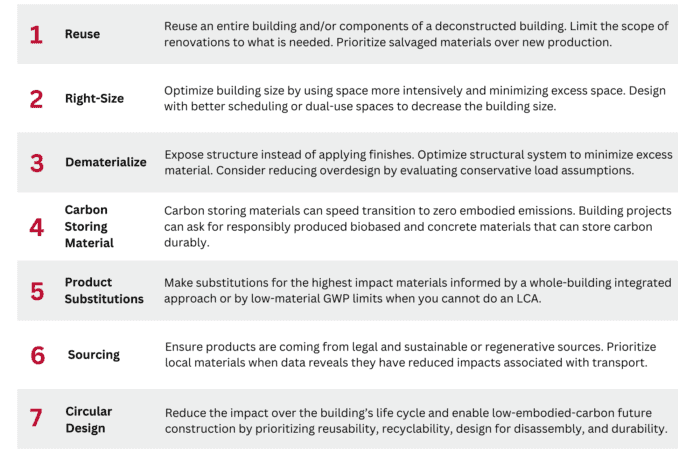
Jeff Hall
Modern construction projects are increasingly prioritizing sustainability as a key project goal. Traditionally, sustainability in the form of LEED® (Leadership in Energy and Environmental Design) certifications has focused on a more prescriptive approach to protect habitats, reduce waste, energy, and water, and provide for more healthy interior environments. In recent years, a new imperative to reduce the built environment’s overall carbon footprint has emerged known as ‘decarbonization.’ Decarbonization is key to reducing the overall impact of the built environment on the climate. This will require construction industry professionals to grasp decarbonization implications and understand best practices toward implementation. In this thought piece, we explore the significance of decarbonization, its impact on construction, and strategies to navigate this crucial shift.
Understanding Decarbonization in Construction
Decarbonization refers to the reduction of carbon in the production of construction materials (‘embodied’ carbon), as well as the reduction of carbon in a facility’s future operation (‘operational’ carbon). Utility generation sources play a significant role in both a product’s embodied carbon and a facility’s operational carbon emissions. By utilizing non-carbon power generating means (e.g., solar, wind, hydroelectric, etc.), the embodied carbon of construction materials and products and the operational carbon of the final facility can be reduced. The United States predominantly generates electricity from fossil fuels, resulting in a high carbon-intensive process. Despite this, project teams can still produce significant positive impacts toward mitigating carbon emissions during the building process by focusing on the following design interventions:

Life Cycle Assessments (LCAs): A Tool to Make Informed Decisions
Additionally, the construction industry is seeing significant advancements in analysis and calculations that aid informed decision-making regarding the carbon footprint of the materials being utilized to build facilities. According to Earth.org, “A carbon footprint is defined as the total amount of greenhouse gases emitted into the atmosphere, such as carbon dioxide (CO2), methane (CH4), nitrous oxide (N2O), hydrofluorocarbons (HFCs), expressed in equivalent tons of CO2.” Life Cycle Assessments (LCAs) calculate construction materials’ embodied carbon sources and also provide assessments for carbon from operational sources.
The most reliable inputs into an LCA involve resourcing Environmental Product Declarations that detail the exact production conditions of the subject materials. To investigate alternatives for early planning purposes, firms can also rely on published ‘generic’ LCA data for classes of materials to make informed design decisions.
Structural steel and ready-mix concrete are two of the most significant embodied carbon materials in construction projects. While some buildings may be able to adapt a wood or timber frame structure, most advanced manufacturing buildings will continue to rely primarily on structural steel and concrete materials. Both product industries are committed to reducing their carbon footprints significantly within the next 30 years. Until then, reduction strategies rely upon a few key considerations:
- Efficiency – Reducing the quantity of materials used.
- Cement Replacement – Using cement alternatives, such as fly ash, when acceptable.
- Higher-Strength Steels – Utilizing higher-strength steels to allow overall tonnage of steel to be reduced.
Embracing a Low-Carbon Future in Sustainable Construction
The future of sustainable construction relies on understanding the carbon footprint of our built environment. As experts in the construction industry, ensuring we prioritize decarbonization in our projects will help pave the way for a more sustainable and low-carbon future. By implementing the strategies mentioned above and using effective tools like LCAs, project teams can make informed decisions driving sustainable construction practices.
Interested in learning more about BE&K Building Group’s effective decarbonization strategies? Contact Jeff Hall at jeff.hall@bekbg.com to learn more about reducing carbon emissions on your next project. Join us in the sustainable revolution – our planet and future generations will thank you!
Discover how BE&K is shaping the future through sustainable design and construction. Check out our recent projects here.